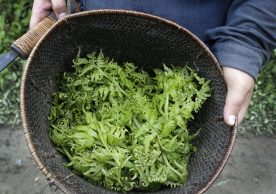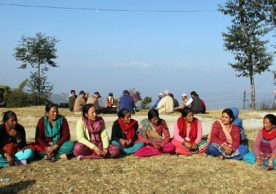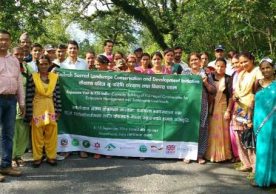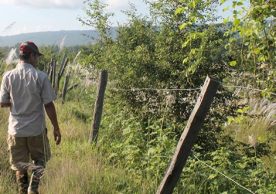This site uses cookies, as explained in our terms of use. If you consent, please close this message and continue to use this site.
This site uses cookies, as explained in our terms of use. If you consent, please close this message and continue to use this site.
When we received an email from ICIMOD inviting us to join the Climate Change Adaptation Policy and Science (CCAPS) conference and the HI-AWARE Academy in Delhi and Dehradun from 24 February–5 March 2016, little did we know what to expect from the events. After corresponding, we learned that the conference dealt with bridging the gap between science and policy in terms of climate change.
0 mins Read
Stay up to date on what’s happening around the HKH with our most recent publications and find out how you can help by subscribing to our mailing list.
Sign UpRelated Content
Business has largely been dominated by men across the world, and Nepal is no exception. Women usually need to be ...

For the Chepang, a highly marginalized indigenous community that primarily inhabits the ridges of the Mahabharat mountain range in Nepal, ...

Water is the lifeblood of every household in Nepal's middle hills, but accessing it is a challenge. Hill hamlets depend ...
Research in agriculture is often looked at sceptically in developing countries, where it is believed that innovative technologies can only ...

Having never been to the far-western region of Nepal, my perception of Darchula was based solely on stories I had ...
Kathmandu, the Nepali capital, is a city with 100 percent reach to the national grid, but it is reeling under ...

The relationship between humans and wildlife is a challenging one. While people place and recognize boundaries around their houses, communities, ...

When I opened the newspaper in early February, a news article immediately caught my eye – “
Business has largely been dominated by men across the world, and Nepal is no exception. Women usually need to be ...

For the Chepang, a highly marginalized indigenous community that primarily inhabits the ridges of the Mahabharat mountain range in Nepal, ...

Water is the lifeblood of every household in Nepal's middle hills, but accessing it is a challenge. Hill hamlets depend ...
Research in agriculture is often looked at sceptically in developing countries, where it is believed that innovative technologies can only ...

Having never been to the far-western region of Nepal, my perception of Darchula was based solely on stories I had ...
Kathmandu, the Nepali capital, is a city with 100 percent reach to the national grid, but it is reeling under ...

The relationship between humans and wildlife is a challenging one. While people place and recognize boundaries around their houses, communities, ...

When I opened the newspaper in early February, a news article immediately caught my eye – “
Business has largely been dominated by men across the world, and Nepal is no exception. Women usually need to be ...

For the Chepang, a highly marginalized indigenous community that primarily inhabits the ridges of the Mahabharat mountain range in Nepal, ...

Water is the lifeblood of every household in Nepal's middle hills, but accessing it is a challenge. Hill hamlets depend ...
Research in agriculture is often looked at sceptically in developing countries, where it is believed that innovative technologies can only ...